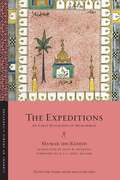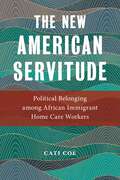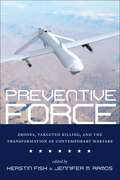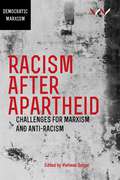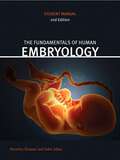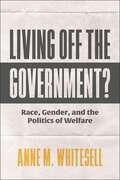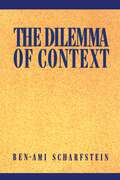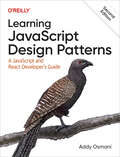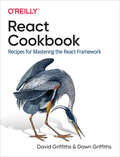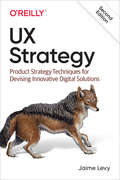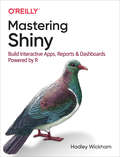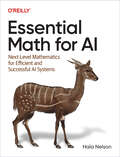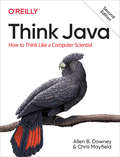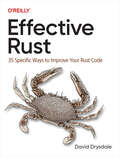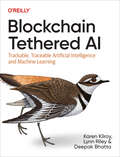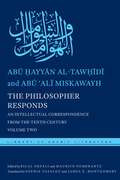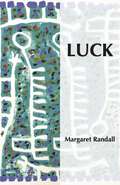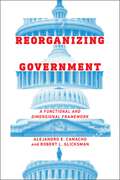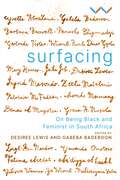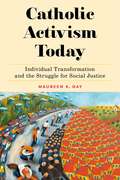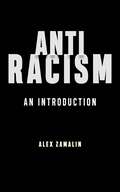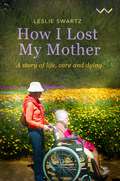- Table View
- List View
The Expeditions: An Early Biography of Muḥammad (Library of Arabic Literature #20)
by Maʿmar ibn RāshidOne of the earliest surviving biographies of Prophet Muḥammad, translated into readable, modern English for the first timeThe Expeditions is one of the oldest biographies of the Prophet Muḥammad to survive into the modern era. Its primary author, Maʿmar ibn Rāshid (96-153/714-770), was a prominent scholar from Basra in southern Iraq who was revered for his learning in prophetic traditions, Islamic law, and the interpretation of the Qurʾan. This fascinating foundational seminal work contains stories handed down by Maʿmar to his most prominent pupil, ʿAbd al-Razzāq of Sanaa, relating Muḥammad’s early life and prophetic career as well as the adventures and tribulations of his earliest followers during their conquest of the Near East.This new translation, which renders the original text into readable, modern English for the first time, is accompanied by numerous annotations elucidating the cultural, religious, and historical contexts of the events and individuals described within its pages.The Expeditions represents an important testimony to the earliest Muslims’ memory of the lives of Muḥammad and his companions, and is an indispensable text for gaining insight into the historical biography of both the Prophet and the rise of the Islamic empire.An English-only edition.
The New American Servitude: Political Belonging among African Immigrant Home Care Workers (Anthropologies of American Medicine: Culture, Power, and Practice #3)
by Cati CoeFinalist, 2020 Elliott P. Skinner Award, given by the Association of Africanist AnthropologyExamines why African care workers feel politically excluded from the United States Care for America’s growing elderly population is increasingly provided by migrants, and the demand for health care labor is only expected to grow. Because of this health care crunch and the low barriers to entry, new African immigrants have adopted elder care as a niche employment sector, funneling their friends and relatives into this occupation. However, elder care puts care workers into racialized, gendered, and age hierarchies, making it difficult for them to achieve social and economic mobility. In The New American Servitude, Coe demonstrates how these workers often struggle to find a sense of political and social belonging. They are regularly subjected to racial insults and demonstrations of power—and effectively turned into servants—at the hands of other members of the care worker network, including clients and their relatives, agency staff, and even other care workers. Low pay, a lack of benefits, and a lack of stable employment, combined with a lack of appreciation for their efforts, often alienate them, so that many come to believe that they cannot lead valuable lives in the United States. While jobs are a means of acculturating new immigrants, African care workers don’t tend to become involved or politically active. Many plan to leave rather than putting down roots in the US. Offering revealing insights into the dark side of a burgeoning economy, The New American Servitude carries serious implications for the future of labor and justice in the care work industry.
Preventive Force: Drones, Targeted Killing, and the Transformation of Contemporary Warfare
by Jennifer M. Ramos Kerstin FiskExamines the recent rise in the United States' use of preventive forceMore so than in the past, the US is now embracing the logic of preventive force: using military force to counter potential threats around the globe before they have fully materialized. While popular with individuals who seek to avoid too many “boots on the ground,” preventive force is controversial because of its potential for unnecessary collateral damage. Who decides what threats are ‘imminent’? Is there an international legal basis to kill or harm individuals who have a connection to that threat? Do the benefits of preventive force justify the costs? And, perhaps most importantly, is the US setting a dangerous international precedent? In Preventive Force, editors Kerstin Fisk and Jennifer Ramos bring together legal scholars, political scientists, international relations scholars, and prominent defense specialists to examine these questions, whether in the context of full-scale preventive war or preventive drone strikes. In particular, the volume highlights preventive drones strikes, as they mark a complete transformation of how the US understands international norms regarding the use of force, and could potentially lead to a ‘slippery slope’ for the US and other nations in terms of engaging in preventive warfare as a matter of course. A comprehensive resource that speaks to the contours of preventive force as a security strategy as well as to the practical, legal, and ethical considerations of its implementation, Preventive Force is a useful guide for political scientists, international relations scholars, and policymakers who seek a thorough and current overview of this essential topic.
Racism After Apartheid: Challenges for Marxism and Anti-Racism
by Vishwas SatgarRacism after Apartheid, volume four of the Democratic Marxism series, brings together leading scholars and activists from around the world studying and challenging racism. In eleven thematically rich and conceptually informed chapters, the contributors interrogate the complex nexus of questions surrounding race and relations of oppression as they are played out in the global South and global North. Their work challenges Marxism and anti-racism to take these lived realities seriously and consistently struggle to build human solidarities.
Fundamentals of Human Embryology: Student Manual (second edition)
by John Allan Beverley KramerThe Fundamentals of Human Embryology covers embryonic development, with a unique focus on adult anatomy. Its goal is to impart to students a comprehensive overview of how the human embryo forms, not only as a basis for the student of human anatomy, but also as a link to abnormalities they may encounter in their clinical careers. Extensively illustrated with labeled line drawings, now enlarged for better visibility, this concise manual will meet the needs of both undergraduate and postgraduate students in the Human Sciences.Special features include:• Separate chapters on the neural crest, the skull and osteogenesis• In-depth coverage of head and neck embryology, including the development of the tooth, for students of dentistry, and speech and audiologyIn this Second Edition of the manual at the request of students and teachers, the authors have made the following changes:• Increased the size of the diagrams• Revised the text to comply with the Federative International Committee on Anatomical Terminology changes to the Terminologia Embryologica• Altered the sequencing of some topics to allow the development to flow more logically• Included an appendix of coloured photographs of congenital abnormalities to help students form a more realistic idea of developmental abnormalities.
Living Off the Government?: Race, Gender, and the Politics of Welfare
by Anne M. WhitesellExplores the ways welfare recipients lack adequate political representationWho deserves public assistance from the government? This age-old question has been revived by policymakers, pundits, and activists following the massive economic impact of the COVID-19 pandemic. Anne Whitesell takes up this timely debate, showing us how our welfare system, in its current state, fails the people it is designed to serve. From debates over stimulus check eligibility to the uncertain future of unemployment benefits, Living Off the Government? tackles it all.Examining welfare rules across eight different states, as well as 19,000 state and local interest groups, Whitesell shows how we determine who is—and who isn't—deserving of government assistance. She explores racial and gender stereotypes surrounding welfare recipients, particularly Black women and mothers; how different groups take advantage of these harmful stereotypes to push their own political agendas; and how the interests and needs of welfare recipients are inadequately represented as a result.Living Off the Government? highlights how harmful stereotypes about the race, gender, and class of welfare recipients filter into our highly polarized political arena to shape public policy. Whitesell calls out a system that she believes serves special interests and not the interests of low-income Americans.
The Dilemma of Context
by Ben-Ami ScharfsteinIn The Dilemma of Context, Scharfstein contends that the problems encountered with context are insoluble. He explains why this problem lays an intellectual burden on us that, while remaining inescapable,can become so heavy it destroys the understandingit was created to further.
Learning JavaScript Design Patterns: A JavaScript and React Developer's Guide
by Addy OsmaniDo you want to write beautiful, structured, and maintainable JavaScript by applying modern design patterns to the language? Do you want clean, efficient, manageable code? Want to stay up-to-date with the latest best practices? If so, the updated second edition of Learning JavaScript Design Patterns is the ideal place to start. Author Addy Osmani shows you how to apply modern design patterns to JavaScript and React—including modules, mixins, observers, and mediators. You'll learn about performance and rendering patterns such as server-side rendering and Islands architecture. You'll also learn how architectural patterns like MVC, MVP, and MVVM are useful from the perspective of a modern web application developer. This book explores:Architectural patterns for structuring your components and appsMore than 20 design patterns in JavaScript and React, applicable for developers at any levelDifferent pattern categories including creational, structural, and behavioralEssential performance patterns including dynamic imports and code-splittingRendering patterns such as server-side rendering, hydration, Islands architecture, and moreAdditionally, you'll explore modern JavaScript syntax like JavaScript modules, React patterns like Hooks, higher-order components (HOCs), and more, to stay ahead in the ever-evolving world of web development.
Modern Business Analytics: Increasing the Value of Your Data with Python and R
by Deanne LarsonDeriving business value from analytics is a challenging process. Turning data into information requires a business analyst who is adept at multiple technologies including databases, programming tools, and commercial analytics tools. This practical guide shows programmers who understand analysis concepts how to build the skills necessary to achieve business value.Author Deanne Larson, data science practitioner and academic, helps you bridge the technical and business worlds to meet these requirements. You'll focus on developing these skills with R and Python using real-world examples. You'll also learn how to leverage methodologies for successful delivery. Learning methodology combined with open source tools is key to delivering successful business analytics and value.This book shows you how to:Apply business analytics methodologies to achieve successful resultsCleanse and transform data using R and PythonUse R and Python to complete exploratory data analysisCreate predictive models to solve business problems in R and PythonUse Python, R, and business analytics tools to handle large volumes of dataCommit code to GitHub to collaborate with data engineers and data scientistsMeasure success in business analytics
React Cookbook: Recipes for Mastering the React Framework
by Dawn Griffiths David GriffithsReact helps you create and work on an app in just a few minutes. But learning how to put all the pieces together is hard. How do you validate a form? Or implement a complex multistep user action without writing messy code? How do you test your code? Make it reusable? Wire it to a backend? Keep it easy to understand? The React Cookbook delivers answers fast.Many books teach you how to get started, understand the framework, or use a component library with React, but very few provide examples to help you solve particular problems. This easy-to-use cookbook includes the example code developers need to unravel the most common problems when using React, categorized by topic area and problem.You'll learn how to:Build a single-page application in React using a rich UICreate progressive web applications that users can install and work with offlineIntegrate with backend services such as REST and GraphQLAutomatically test for accessibility problems in your applicationSecure applications with fingerprints and security tokens using WebAuthnDeal with bugs and avoid common functional and performance problems
UX Strategy: How To Devise Innovative Digital Products That People Want
by Jaime LevyUser experience (UX) strategy lies at the intersection of UX design and business strategy, but until now, there hasn't been an easy-to-apply framework for executing it. This hands-on guide introduces lightweight product strategy tools and techniques to help you and your team devise innovative digital solutions that people want.Author Jaime Levy shows UX/UI designers, product managers, entrepreneurs, and aspiring strategists simple to advanced methods that can be applied right away. You'll gain valuable perspective through business cases and historical context. This second edition includes new real-world examples, updated techniques, and a chapter on conducting qualitative online user research.Define value propositions and validate target users through provisional personas and customer discovery techniquesExplore marketplace opportunities by conducting competitive research and analysisDesign experiments using rapid prototypes that are focused on the business modelConduct online user research to gain valuable insights quickly on any budgetTest business ideas and validate marketing channels by running online advertising and landing page campaigns
Mastering Shiny
by Hadley WickhamMaster the Shiny web framework—and take your R skills to a whole new level. By letting you move beyond static reports, Shiny helps you create fully interactive web apps for data analyses. Users will be able to jump between datasets, explore different subsets or facets of the data, run models with parameter values of their choosing, customize visualizations, and much more.Hadley Wickham from RStudio shows data scientists, data analysts, statisticians, and scientific researchers with no knowledge of HTML, CSS, or JavaScript how to create rich web apps from R. This in-depth guide provides a learning path that you can follow with confidence, as you go from a Shiny beginner to an expert developer who can write large, complex apps that are maintainable and performant.Get started: Discover how the major pieces of a Shiny app fit togetherPut Shiny in action: Explore Shiny functionality with a focus on code samples, example apps, and useful techniquesMaster reactivity: Go deep into the theory and practice of reactive programming and examine reactive graph componentsApply best practices: Examine useful techniques for making your Shiny apps work well in production
Essential Math for AI: Next-Level Mathematics for Efficient and Successful AI Systems
by Hala NelsonCompanies are scrambling to integrate AI into their systems and operations. But to build truly successful solutions, you need a firm grasp of the underlying mathematics. This accessible guide walks you through the math necessary to thrive in the AI field such as focusing on real-world applications rather than dense academic theory.Engineers, data scientists, and students alike will examine mathematical topics critical for AI--including regression, neural networks, optimization, backpropagation, convolution, Markov chains, and more--through popular applications such as computer vision, natural language processing, and automated systems. And supplementary Jupyter notebooks shed light on examples with Python code and visualizations. Whether you're just beginning your career or have years of experience, this book gives you the foundation necessary to dive deeper in the field.Understand the underlying mathematics powering AI systems, including generative adversarial networks, random graphs, large random matrices, mathematical logic, optimal control, and moreLearn how to adapt mathematical methods to different applications from completely different fieldsGain the mathematical fluency to interpret and explain how AI systems arrive at their decisions
Think Java: How to Think Like a Computer Scientist
by Allen B. Downey Chris MayfieldCurrently used at many colleges, universities, and high schools, this hands-on introduction to computer science is ideal for people with little or no programming experience. The goal of this concise book is not just to teach you Java, but to help you think like a computer scientist. You’ll learn how to program—a useful skill by itself—but you’ll also discover how to use programming as a means to an end.Authors Allen Downey and Chris Mayfield start with the most basic concepts and gradually move into topics that are more complex, such as recursion and object-oriented programming. Each brief chapter covers the material for one week of a college course and includes exercises to help you practice what you’ve learned.Learn one concept at a time: tackle complex topics in a series of small steps with examplesUnderstand how to formulate problems, think creatively about solutions, and write programs clearly and accuratelyDetermine which development techniques work best for you, and practice the important skill of debuggingLearn relationships among input and output, decisions and loops, classes and methods, strings and arraysWork on exercises involving word games, graphics, puzzles, and playing cardsThe updated second edition of Think Java also features new chapters on polymorphism and data processing, as well as content covering changes through Java 12.
Effective Rust: 35 Specific Ways to Improve Your Rust Code
by David DrysdaleRust's popularity is growing, due in part to features like memory safety, type safety, and thread safety. But these same elements can also make learning Rust a challenge, even for experienced programmers. This practical guide helps you make the transition to writing idiomatic Rust—while also making full use of Rust's type system, safety guarantees, and burgeoning ecosystem.If you're a software engineer who has experience with an existing compiled language, or if you've struggled to convert a basic understanding of Rust syntax into working programs, this book is for you. By focusing on the conceptual differences between Rust and other compiled languages, and by providing specific recommendations that programmers can easily follow, Effective Rust will soon have you writing fluent Rust, not just badly translated C++.Understand the structure of Rust's type systemLearn Rust idioms for error handling, iteration, and moreDiscover how to work with Rust's crate ecosystemUse Rust's type system to express your designWin fights with the borrow checkerBuild a robust project that takes full advantage of the Rust tooling ecosystem
Blockchain Tethered AI: Trackable, Traceable Artificial Intelligence and Machine Learning
by Karen Kilroy Lynn Riley Deepak BhattaRemove your doubts about AI and explore how this technology can be future-proofed using blockchain's smart contracts and tamper-evident ledgers. With this practical book, system architects, software engineers, and systems solution specialists will learn how enterprise blockchain provides permanent provenance of AI, removes the mystery, and allows you to validate AI before it's ever used. Authors Karen Kilroy, Lynn Riley, and Deepak Bhatta explain that AI's ability to change itself through program synthesis could take the technology beyond human control. With this book, you'll learn an efficient way to solve this problem by building simple blockchain controls for verifying, tracking, tracing, auditing, and even reversing AI. Blockchain tethered AI interweaves the MLOps process with blockchain so that an MLOps system requires blockchain to function, which in turn tethers AI. This guide shows you how. You will: Learn how to create and power AI marketplaces with blockchainUnderstand why and how to implement on-chain AI governanceControl AI by learning methods to tether it to blockchain networksUse blockchain crypto anchors to detect common AI hacksLearn methods for reversing tethered AI
How to Use a Breadboard!
by Jody Culkin Sean Michael RaganThis full-color, illustrated handbook uses comic book-style panels to explain the basics of using a breadboard; then it walks you through ten fun and educational projects. You'll learn-by-doing as you study the circuit diagrams and colorful drawings, working your way through each project. Bonus features include an "X-Ray" drawing of the inside of the breadboard and a guide to understanding resistor color codes. A solderless breadboard is the perfect platform for learning electronics, whether at home or in the classroom, because it can be used over and over again for different circuits. With the projects in this handbook, you will learn how to use a light sensor, a potentiometer, a diode, a 555 timer, capacitors, transistors, and more! You'll also be challenged to actively figure out what else you can do with the circuits you have built.Learn how to build the following circuits:Dark DetectorLED FlasherElectric CricketBreathing LEDBanshee SirenLight TheraminBlues OrganBike Signal LightTouch SwitchLed Color OrganAs you gain experience building the circuits, you'll also learn how to read schematics - the shorthand language of electronics. The glossary provides definitions and illustrations for terms that may be unfamiliar.There's no better way to learn than by making things yourself. In this booklet you won't be handed all the answers. You'll be encouraged to experiment, and you'll be asked questions that you'll have to try to answer yourself. Get started with your breadboard experiments today.Electronics is the perfect STEM subject because it touches on all the key components - science, technology, engineering, and mathematics. Build your technical skills with this hands-on learning course!
The Philosopher Responds: An Intellectual Correspondence from the Tenth Century, Volume Two (Library of Arabic Literature #24)
by Abū Ḥayyān al-Tawḥīdī Abū ʿAlī MiskawayhQuestions and answers from two great philosophersWhy is laughter contagious? Why do mountains exist? Why do we long for the past, even if it is scarred by suffering? Spanning a vast array of subjects that range from the philosophical to the theological, from the philological to the scientific, The Philosopher Responds is the record of a set of questions put by the litterateur Abu Hayyan al-Tawhidi to the philosopher and historian Abu 'Ali Miskawayh. Both figures were foremost contributors to the remarkable flowering of cultural and intellectual life that took place in the Islamic world during the reign of the Buyid dynasty in the fourth/tenth century. The correspondence between al-Tawhidi and Miskawayh holds a mirror to many of the debates and preoccupations of the time and reflects the spirit of rationalistic inquiry that animated their era. It also provides insight into the intellectual outlooks of two thinkers who were divided as much by their distinctive temperaments as by the very different trajectories of their professional careers. Alternately whimsical and tragic, wondering and brooding, trivial and profound, al-Tawhidi’s questions provoke an interaction as interesting in its spiritedness as in its content. This new edition of The Philosopher Responds is accompanied by the first full-length English translation of this important text, bringing this interaction to life for the English reader.A bilingual Arabic-English edition.
Luck
by Margaret RandallFearless personal essays from a treasured feminist poet and activistLuck is a collection of essays covering such topics as memory, language, landscape, poetry, anger, sex, food, pandemics, war, violence, feminism, lies, imagination, death, power, identity, and of course luck. Some are full-blown explorations, others brief riffs. Some are prose poetry, others straightforward prose. The author combines scholarly research with personal experience, producing texts both intimate and illuminating. Always attentive to the world around her and the one within, Randall has brought us her most relevant and powerful essays to date.
Reorganizing Government: A Functional and Dimensional Framework
by Alejandro Camacho Robert GlicksmanA pioneering model for constructing and assessing government authority and achieving policy goals more effectivelyRegulation is frequently less successful than it could be, largely because the allocation of authority to regulatory institutions, and the relationships between them, are misunderstood. As a result, attempts to create new regulatory programs or mend under-performing ones are often poorly designed. Reorganizing Government explains how past approaches have failed to appreciate the full diversity of alternative approaches to organizing governmental authority. The authors illustrate the often neglected dimensional and functional aspects of inter-jurisdictional relations through in-depth explorations of several diverse case studies involving securities and banking regulation, food safety, pollution control, resource conservation, and terrorism prevention. This volume advances an analytical framework of governmental authority structured along three dimensions—centralization, overlap, and coordination. Camacho and Glicksman demonstrate how differentiating among these dimensions better illuminates the policy tradeoffs of organizational alternatives, and reduces the risk of regulatory failure. The book also explains how differentiating allocations of authority based on governmental function can lead to more effective regulation and governance. The authors illustrate the practical value of this framework for future reorganization efforts through the lens of climate change, an emerging and vital global policy challenge, and propose an “adaptive governance” infrastructure that could allow policy makers to embed the creation, evaluation, and adjustment of the organization of regulatory institutions into the democratic process itself.
For Pleasure: Race, Experimentalism, and Aesthetics (Minoritarian Aesthetics)
by Rachel Jane CarrollArgues that aesthetic pleasure plays a key role in both racial practices and struggles against racistdominationFor Pleasure proposes that experimental aesthetics shaped race in the twentieth-century United Statesby creating transformative scenes of pleasure. Rachel Jane Carroll explains how aesthetic pleasure isfundamental to the production and circulation of racial meaning in the United States through a study ofexperimental work by authors and artists of color.For Pleasure offers methods for reading experimental literature and art produced by racially minoritizedauthors and artists working in and around the US, including Isaac Julien, Nella Larsen, Yoko Ono, JackWhitten, Byron Kim, Glenn Ligon, Zora Neale Hurston, Theresa Hak Kyung Cha, and Cici Wu. Along theway, we learn what a racist joke has to do with the history of monochrome painting, if beauty has a partto play in social change, and whether whimsy should be taken seriously as a political affect. Carrolldraws attention to key connections between aesthetic pleasure and experimentation through theirshared capacity for world-building. Neither aesthetic pleasure nor experimental forms are liberatory inand of themselves; however, both can interrupt, defamiliarize, and rearrange our habits of aestheticjudgment.
Surfacing: On being black and feminist in South Africa
by Desiree Lewis and Gabeba BaderoonAn anthology dedicated to contemporary Black South African feminist writing influential to today's scholars and radical thinkersSurfacing: On Being Black and Feminist in South Africa is the first collection dedicated to contemporary Black South African feminist perspectives. Leading feminist theorist, Desiree Lewis, and poet and feminist scholar, Gabeba Baderoon, have curated contributions by some of the finest writers and thought leaders into an essential resource. Radical polemic sits side by side with personal essays, and critical theory coexists with rich and stirring life histories. The collection demonstrates a dazzling range of feminist voices from established scholars and authors to emerging thinkers, activists and creative practitioners.The writers within these pages use creative expression, photography and poetry in eclectic, interdisciplinary ways to unearth and interrogate representations of blackness, sexuality, girlhood, history, divinity, and other themes. Surfacing asks: what do the African feminist traditions that exist outside the canon look and feel like? What complex cultural logics are at work outside the centers of power? How do spirituality and feminism influence each other? What are the histories and experiences of queer Africans? What imaginative forms can feminist activism take?Surfacing is indispensable to anyone interested in feminism from Africa, which its contributors show in vivid and challenging conversation with the rest of the world. It will appeal to a diverse audience of students, activists, critical thinkers, academics and artists.
Catholic Activism Today: Individual Transformation and the Struggle for Social Justice (Religion and Social Transformation #11)
by Maureen K. DayUncovers why Catholic organizations fail to foster civic activismThe American Catholic Church boasts a long history of teaching and activism on issues of social justice. In the face of declining religious and community involvement in the twenty-first century, many modern-day Catholic groups aspire to revive the faith as well as their connections to the larger world. Yet while thousands attend weekly meetings designed to instill religiosity and a commitment to civic engagement, these programs often fail to achieve their more large-scale goals.In Catholic Activism Today, Maureen K. Day sheds light on the impediments to successfully enacting social change. She argues that popular organizations such as JustFaith Ministries have embraced an approach to civic engagement that focuses on mobilizing Catholics as individuals rather than as collectives. There is reason to think this approach is effective—these organizations experience robust participation in their programs and garner reports of having had a transformative effect on their participants’ lives. Yet, Day shows that this approach encourages participants to make personal lifestyle changes rather than contend with structural social inequalities, thus failing to make real inroads in the pursuit of social justice. Moreover, the focus on the individual serves to undermine the institutional authority of the Catholic Church itself, shifting American Catholics’ perceptions of the Church from a hierarchy that controls the laity to one that simply influences it as they pursue their individual paths.Drawing on three years of interview, survey, and participant observation data, Catholic Activism Today offers a compelling new take on contemporary dynamics of Catholic civic engagement and its potential effect on the Church at large.
Antiracism: An Introduction
by Alex ZamalinAn introduction to antiracism, a powerful tradition crucial for energizing American democracyOn August 12, 2017, in Charlottesville, Virginia, a rally of white nationalists and white supremacists culminated in the death of a woman murdered in the street. Those events made clear that racism is alive and well in the United States of America. However, they also brought into sharp relief another American tradition: antiracism. While racists marched and chanted in the streets, they were met and matched by even larger numbers of protesters calling for racism’s end. Racism is America’s original and most enduring sin, with well-known historic and contemporary markers: slavery, lynching, Jim Crow, redlining, mass incarceration, police brutality. But racism has always been challenged by an opposing political theory and practice. Alex Zamalin’s Antiracism tells the story of that opposition.The most theoretically generative and politically valuable source of antiracist thought has been the black American intellectual tradition. While other forms of racial oppression—for example, anti-Semitism, Islamophobia, and anti-Latino racism—have been and continue to be present in American life, antiblack racism has always been the primary focus of American antiracist movements. From antislavery abolition to the antilynching movement, black socialism to feminism, the long Civil Rights movement to the contemporary Movement for Black Lives, Antiracism examines the way the black antiracist tradition has thought about domination, exclusion, and power, as well as freedom, equality, justice, struggle, and political hope in dark times.Antiracism is an accessible introduction to the political theory of black American antiracism, through a study of the major figures, texts, and political movements across US history. Zamalin argues that antiracism is a powerful tradition that is crucial for energizing American democracy.
How I Lost My Mother: A story of life, care and dying
by Leslie SwartzHow I Lost My Mother is a deeply felt account of the relationship between a mother and son, and an exploration of what care for the dying means in contemporary societyThe book is emotionally complex – funny, sad and angry – but above all, heartfelt and honest. It speaks boldly of challenges faced by all of us, challenges which are often not spoken about and hidden, but which deserve urgent attention. This is first and foremost a work of the heart, a reflection on what relationships mean and should mean. There is much in the book about relationships of care and exploitation in southern Africa, and about white Jewish identity in an African context. But despite the specific and absorbing references to places and contexts, the book offers a broader, more universal view. All parents of adult children, and all adults who have parents alive, or have lost their parents, will find much in this book to make them laugh, cry, think and feel.
